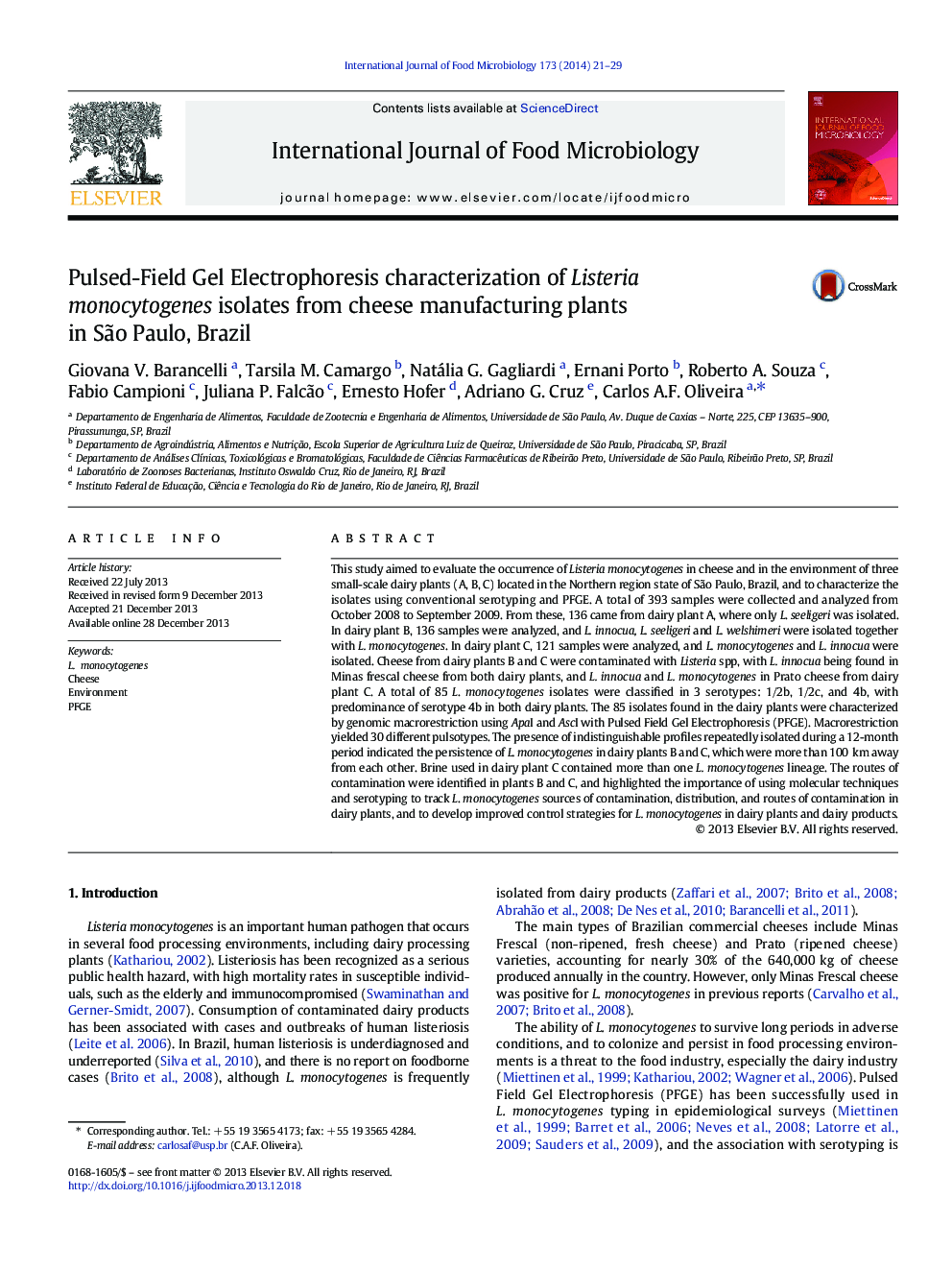| کد مقاله | کد نشریه | سال انتشار | مقاله انگلیسی | نسخه تمام متن |
|---|---|---|---|---|
| 4367005 | 1616609 | 2014 | 9 صفحه PDF | دانلود رایگان |

• L. monocytogenes isolates from 3 cheese manufacturing plants in Brazil were evaluated.
• Isolates were classified in 4 serotypes, with predominance of serotype 4b.
• PFGE analysis showed different sources of contamination and persistence in 2 plants.
• L. monocytogenes was widely distributed and adapted to the dairy plant environment.
This study aimed to evaluate the occurrence of Listeria monocytogenes in cheese and in the environment of three small-scale dairy plants (A, B, C) located in the Northern region state of São Paulo, Brazil, and to characterize the isolates using conventional serotyping and PFGE. A total of 393 samples were collected and analyzed from October 2008 to September 2009. From these, 136 came from dairy plant A, where only L. seeligeri was isolated. In dairy plant B, 136 samples were analyzed, and L. innocua, L. seeligeri and L. welshimeri were isolated together with L. monocytogenes. In dairy plant C, 121 samples were analyzed, and L. monocytogenes and L. innocua were isolated. Cheese from dairy plants B and C were contaminated with Listeria spp, with L. innocua being found in Minas frescal cheese from both dairy plants, and L. innocua and L. monocytogenes in Prato cheese from dairy plant C. A total of 85 L. monocytogenes isolates were classified in 3 serotypes: 1/2b, 1/2c, and 4b, with predominance of serotype 4b in both dairy plants. The 85 isolates found in the dairy plants were characterized by genomic macrorestriction using ApaI and AscI with Pulsed Field Gel Electrophoresis (PFGE). Macrorestriction yielded 30 different pulsotypes. The presence of indistinguishable profiles repeatedly isolated during a 12-month period indicated the persistence of L. monocytogenes in dairy plants B and C, which were more than 100 km away from each other. Brine used in dairy plant C contained more than one L. monocytogenes lineage. The routes of contamination were identified in plants B and C, and highlighted the importance of using molecular techniques and serotyping to track L. monocytogenes sources of contamination, distribution, and routes of contamination in dairy plants, and to develop improved control strategies for L. monocytogenes in dairy plants and dairy products.
Journal: International Journal of Food Microbiology - Volume 173, 3 March 2014, Pages 21–29